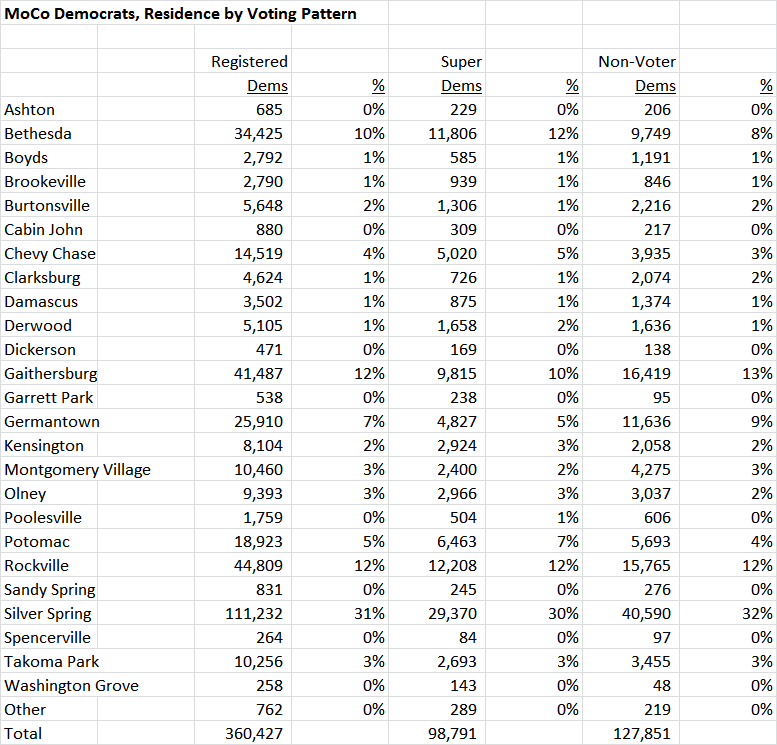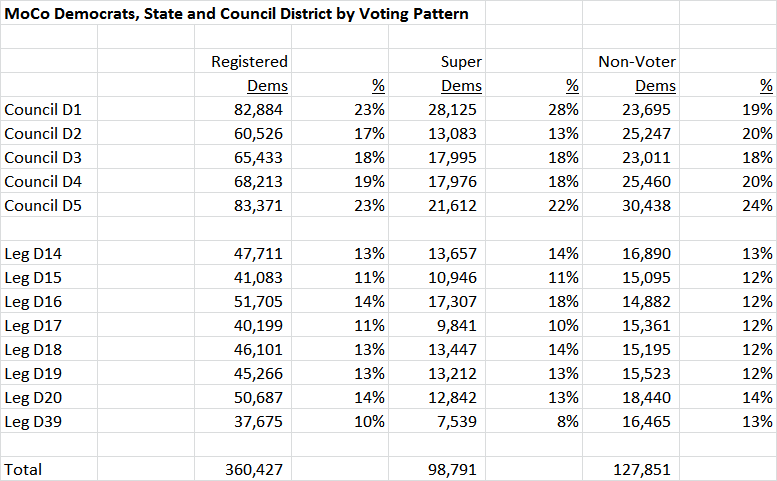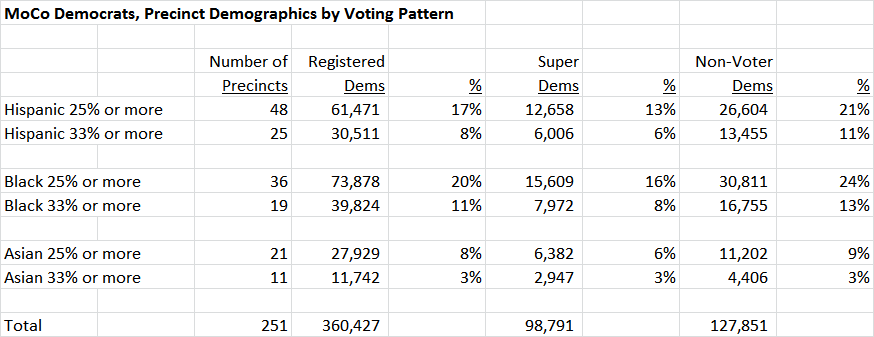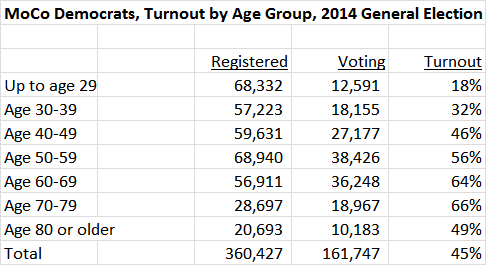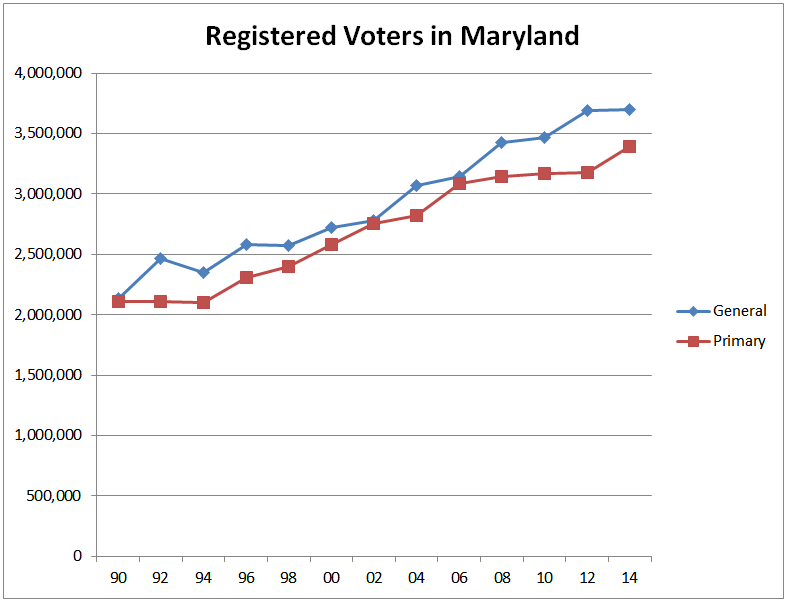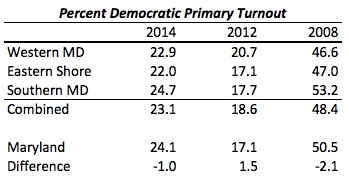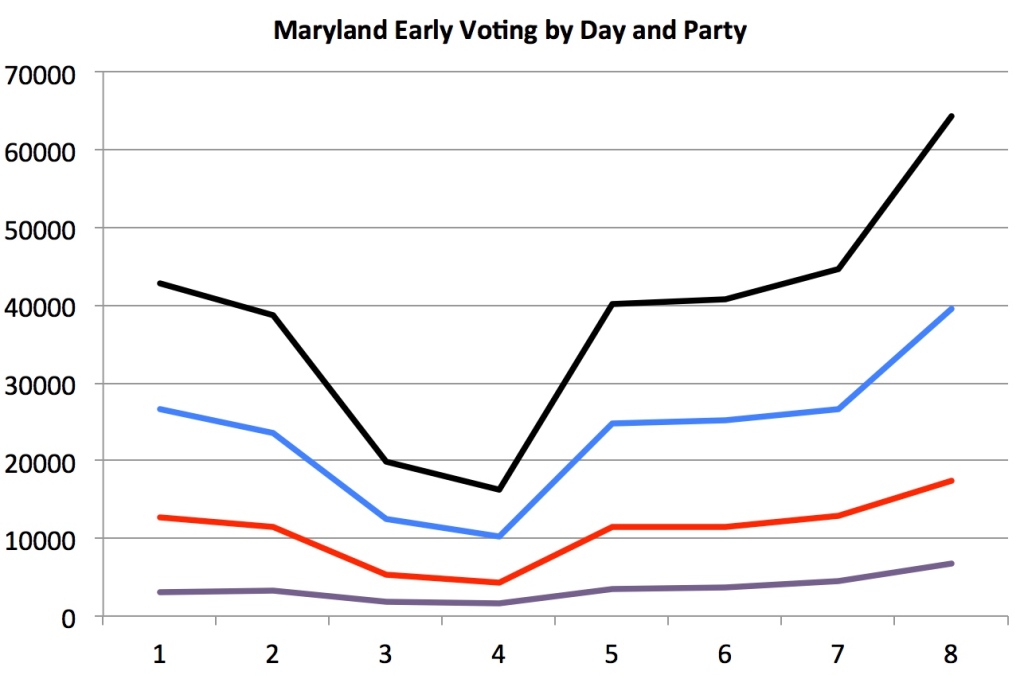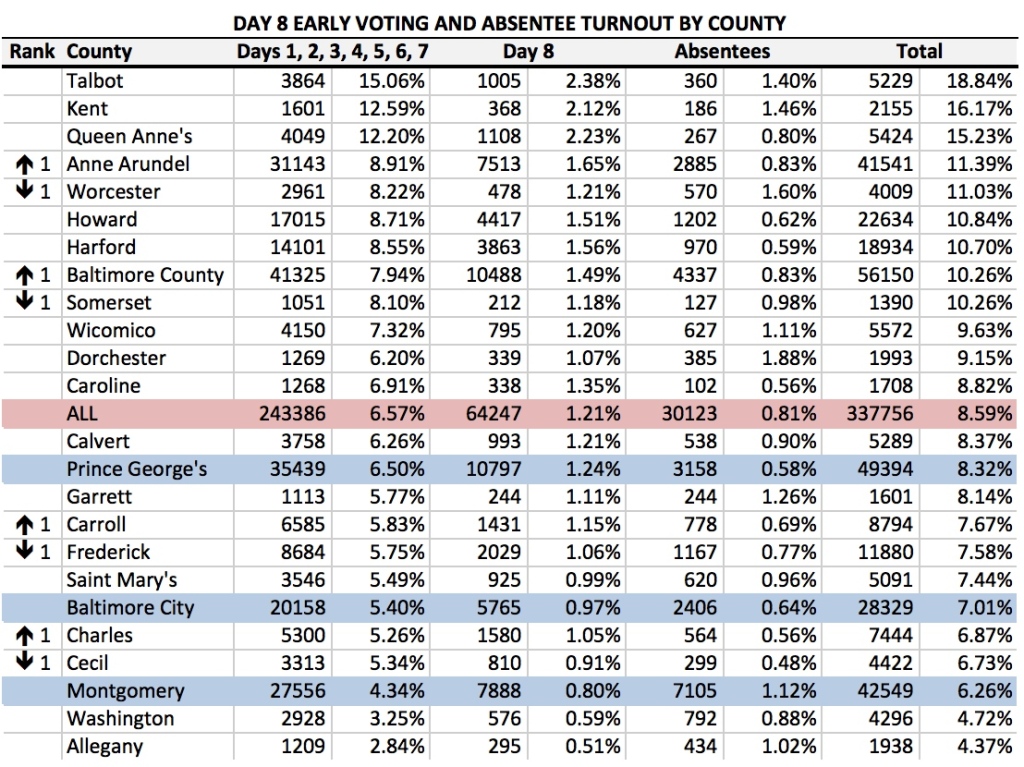Building on Adam Pagnucco’s analysis from yesterday, I thought it would be great to delve into voter turnout in past Democratic primaries within the Eighth Congressional District. My gratitude to the reader who provided me with this extremely interesting registration and turnout data.
Registered Democrats by State Legislative District
So where do registered Democrats live and which ones are more likely to vote? The first table shows the current number of registered Democrats along with past primary turnout broken down by state legislative district. Note that the data include only the portion of state legislative districts within CD 8.

D16 holds 19.8% of registered Democrats and an even higher share of actual voters. In Democratic primaries from 2008 through 2014, D16 residents formed at least 21.0% and as much as 22.2% of voters. D16 is the most highly educated district in Maryland–and quite possibly the country–and studies show that education is more strongly related to voter turnout than any other factor. These numbers should encourage Del. Ariana Kelly.
In contrast, these numbers are less favorable to Sen. Jamie Raskin (D-20). Though D20 is chock-a-block with registered Democrats, not all of D20 is in CD8. As a result, D20 is home to just 16.9% of registered Democrats in the Eighth, probably less than many expect though still high.
Moreover, turnout within the D20 portions of CD8 is erratic. In 2014, D20 Democrats voted at a relatively high rate in the primary and constituted 17.6% of CD 8 Democratic primary voters. But their share in the district never exceeded 15.8% in the Democratic party primaries held from 2008 through 2012.
The second biggest stronghold of potential Democratic primary voters in CD 8 is D18, as it is home to 18.8% of all of registered Democrats. Turnout effects are smaller than in D16 or D20 with the share of D18 Democrats among all of the Eighth’s primary voters ranging from just 18.2% to 19.6%.
Del. Kumar Barve (D-17) suffers not only from the split in his district between the Sixth and Eighth Congressional Districts but the relative paucity of Democrats. Barve currently represents just 8.5% of the Eighth’s registered Democrats. They also tend to under perform on primary day, as their share of CD 8 voters ranged from 7.7% to 8.2% in the past four Democratic primaries.
Finally, it is worth noting that 17.9% of registered Democrats living in the Eighth don’t live in Montgomery County, so candidates will want to spend time and advertise in these areas. Fortunately for candidates, only around 8% of registered Democrats live in Carroll County, located in the Baltimore media market.
The rest live in the very expensive Washington media market where the vast majority of viewers are not registered Democrats living in the Eighth District. Less pricey social media will be extremely popular this year. But candidates cannot forget traditional media, as the primary electorate skews very old.
Registered Democrats by State Legislative and County Council Districts
The second table breaks down the share of registered Democrats by state legislative district and county council district:

Montgomery Councilmember Roger Berliner (D-1) represents 26.9% of CD 8’s Democrats but he has declined to enter the race. However, Montgomery County District 5 holds 22.5% of registered Democrats in the Eighth–a higher share than any state legislative district. Rumored congressional candidate and former Councilmember Valerie Ervin represented a slightly differently configured version of District 5.
At-Large Montgomery Councilmember Nancy Floreen has publicly mused about a run for Congress. She represents 81.8% of registered Democrats in CD 8, an overlap that any other of the rumored candidates would envy. But, as Adam pointed out, she has only run in the multimember at-large district, so the congressional race would be a different. Nevertheless, Floreen likely starts with higher name recognition than other candidates.
Likely Voters by State Legislative and County Council Districts
The final table breaks down the share of Democrats who voted in at least two of the past four primaries by state legislative district and county council district:

Interestingly, this table reveals that D16 holds more people who are likely to vote in the primary than Council District 5. The high rates of turnout among D16 residents would bring Del. Kelly to parity with former Councilmember Ervin in terms of likely voters previously represented even though Ervin represented far more people.
Turnout only accentuates the Montgomery tilt of CD 8, as it is home to 82.5% of people who voted in at least one-half of the past four primaries. Among the remainder, 10.1% live in Frederick County as compared to 7.4% in Carroll County.
Based on this table, the most desirable pieces of real estate to have represented before in terms of Democratic primary turnout are:
1. Montgomery County (Floreen)
2. Montgomery County Council District 1
3. State Legislative District 16 (Kelly)
4. Montgomery County Council District 5 (Ervin)
5. State Legislative District 18
6. Montgomery County Council District 4
7. State Legislative District 20 (Raskin)
8. Montgomery County Council District 3
9. State Legislative District 19
10. Frederick County
11. State Legislative District 4
12. State Legislative District 17 (Barve)
Still, as Adam points out, all candidates have a lot of work to do to get known to most voters. Floreen and Kelly, who represent the most voters, have run only in multi-candidate contests. Other candidates have good bases but have run only in lower visibility races and in a portion of CD 8.
The keys to a good campaign remain the same: message, money, volunteers, and organization. Candidates need to have a message to sell to voters. They need money to pay for media to get it across and volunteers to spread the word and help canvass. But none of it matters if the candidate cannot run a a good strategic campaign.


